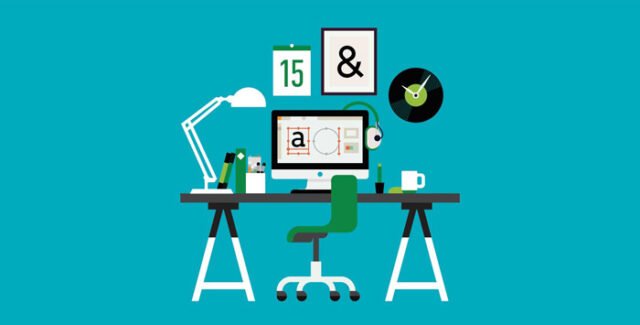
Same as in any other line of work, a career in the graphic design industry presupposes certain skills and abilities. There must be some existent talent in the visual arts. Other important requirements are creativity and mastering new design programs. No doubt about it, graphic design is an exciting profession, constantly having to evolve and stay up to date with new technologies and creative trends.
Here’s a summed up list of skills and duties you’ll have to live up to as a graphic designer:
- Coming up with visual solutions for communication problems. Convincing pieces of design that clearly relate to your clients’ messages, able to communicate that message through visual stimulation.
- Put up a presentation of your solutions and suggestion, meeting with client.
- After the brief, gather information and material that would suit predefined guidelines.
- Get to it: use proper requisites like fonts, color, images and full text portions to create and then finalize your product.
- Revise it before releasing.
- Establish cooperation with external printers for a mutual goal of high standard quality and deadline-meeting schedule.
Interestingly enough, the gender ratio in this industry is almost, but not fully balanced. Some percentage of male domination stands out, the number being 56.3%, and remaining 43.7% left for women to sustain. With graphic and web design being a fast growing, progressive and overall innovative industry, there’ll certainly be room there for you, whether you’re a boy or a girl. Just some of the positions to be filled are: assistant designer in online advertising, assistant desktop publisher, assistant digital content artist, junior graphic/web designer and numerous others along with their freelance counterparts. We have an empirical example of Australia with 56.600 people employed in graphic design, going towards new job openings within this profession, 8.400 in five years’ time, to be exact.
As for the educational background, the statistics point out that a bit more than a half of graphic designers hold a bachelor degree, while 26.4% marked their training with a diploma and/or an advanced diploma. These credentials are equally important as your portfolio.
It might come as a surprise, but graphic design was originally mentioned way back in 1922. The first computer tools in this field were developed in the 80s, defining the profession as we know it today. But early on the term ‘graphic’ was all about ‘giving a clear picture’. In light of that semantics, we could say that contemporary graphic design provides with proper representations and communicates an idea, a concept or a product’s features at the same time.














